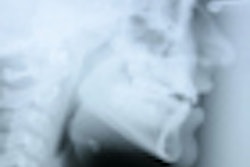Using a phosphor-plate digital x-ray system can reduce the radiation dose to one-third of that required for conventional film, according to a study in Dentomaxillofacial Radiology (May 2010, Vol. 39:4, pp. 207-215).
"Conventional periapical x-ray films do not use an intensifying screen, and thus they need relatively high x-ray exposure doses for imaging," wrote researchers from Kanagawa Dental College in Japan. "Therefore, x-ray dose reduction is possible when the PSPL [photostimulable phosphor luminescence] imaging system is used for intraoral radiography."
Using three PSPL x-ray imaging systems -- DenOptix (Gendex), VistaScan (Dürr Dental), and Computed Radiography XL-1 (Fuji) -- the researchers attempted to clarify the change in image quality upon x-ray dose reduction and verify the usefulness of multiobjective frequency processing (MFP) and flexible noise control (FNC) for dose reduction.
Modulation transfer function, noise equivalent number of quanta (NEQ), and detective quantum efficiency (DQE) were evaluated to compare the basic physical performance of each system. Subjective visual evaluation of diagnostic ability for normal anatomical structures was performed. The NEQ, DQE, and diagnostic ability were evaluated at base x-ray dose, and 1/3, 1/10, and 1/20 of the base dose.
The researchers found that the images from all three systems had a higher diagnostic utility compared with conventional film images at the base and 1/3 x-ray doses. In addition, the subjective image quality was better at the base x-ray dose than at 1/3 of the base dose in all systems. The MFP and FNC-processed images had a higher diagnostic utility than the images without MFP and FNC.
"The results of the present study suggest that PSPL imaging systems can reduce the x-ray dose to 1/3 of that of conventional periapical x-ray film and that this can be further reduced to 1/10, and the resultant images improved, using MFP and FNC," the researchers concluded.
Copyright © 2010 DrBicuspid.com



















